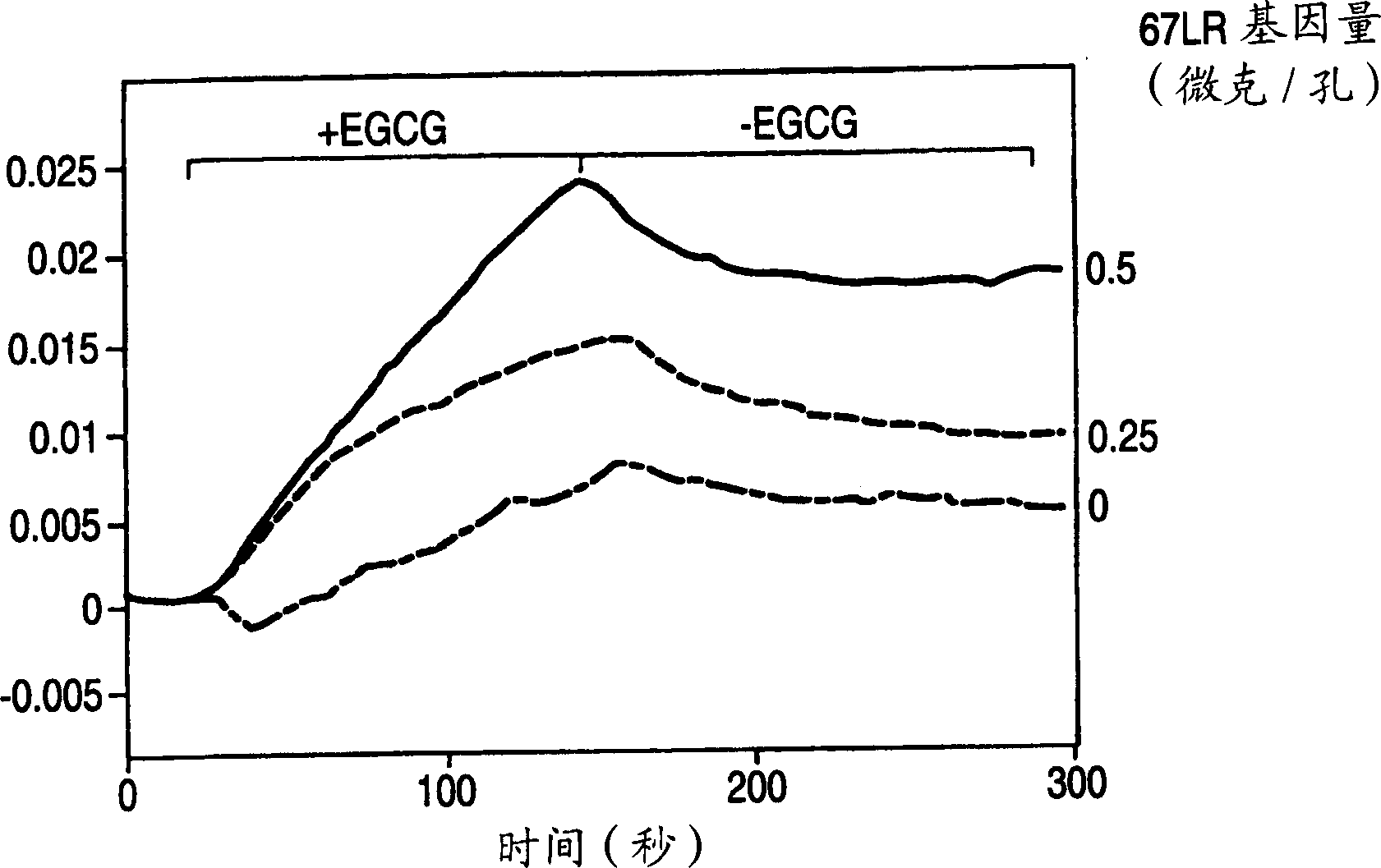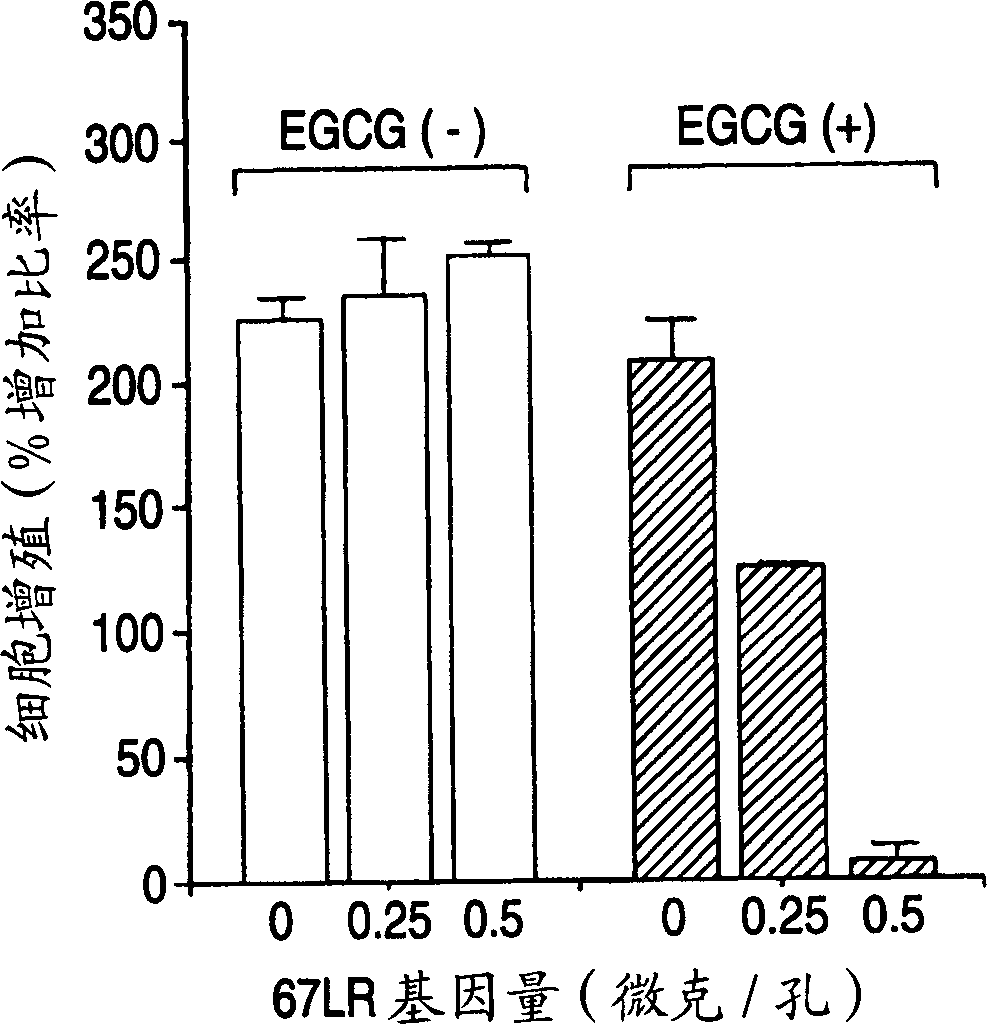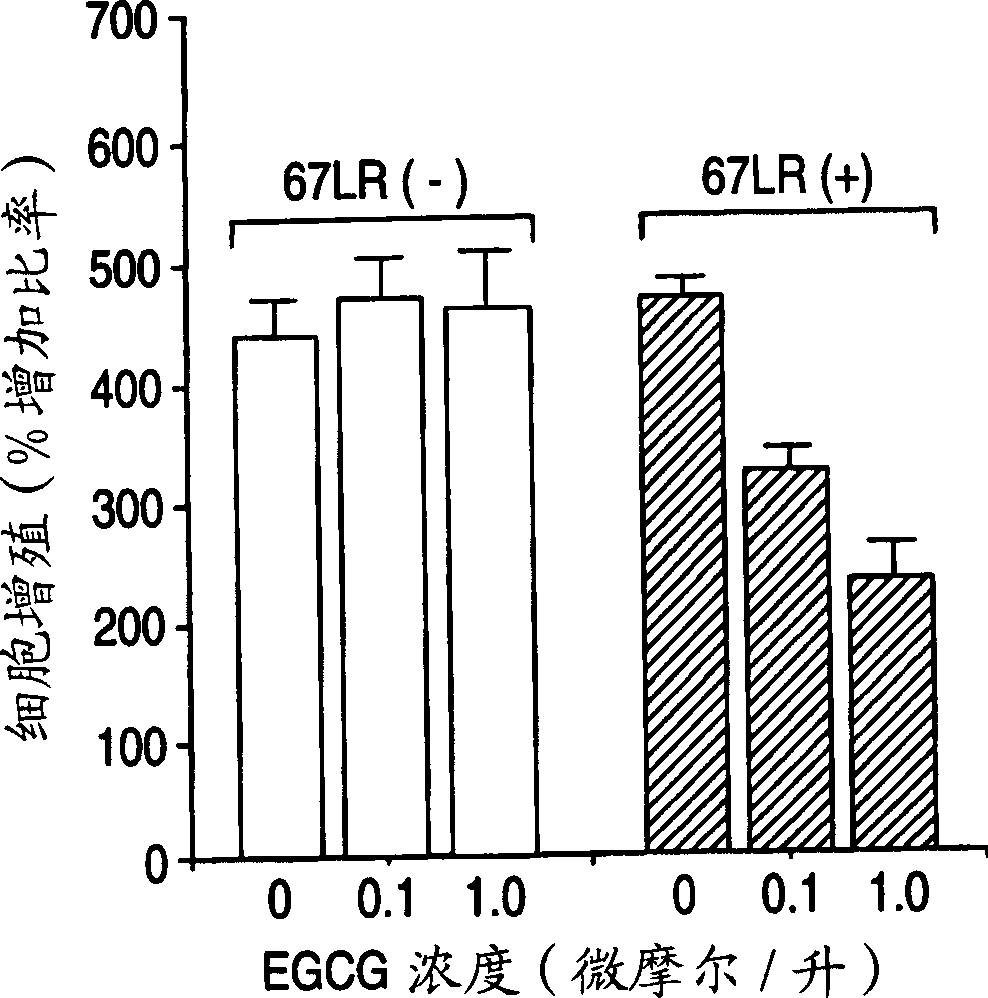Method of screening drug with the use of 67 KDA laminin receptor and drug obtained thereby
A technology for laminin and drug screening, which is applied in the direction of drug combination, pharmaceutical formulation, testing of pharmaceutical preparations, etc.
- Summary
- Abstract
- Description
- Claims
- Application Information
AI Technical Summary
Problems solved by technology
Method used
Image
Examples
Embodiment 1
[0185] Example 1 Effects of introducing 67LR gene on the cell binding and proliferative activity of EGCG
[0186] Using FuGENE TM 6 transfection agent 67LR expression vector (pT ARGE T-hLamininR) was introduced into A549 cells. Adjust cells to 1 x 10 4 cells / mL (10% FBS-ERDF medium). After 24 hours, take new ERDF medium in the tube and directly add FuG ENE TM 6 (3 times the amount of gene), mix gently. Next add pT at different concentrations ARGE T-hLamininR and mix gently for 30 min at room temperature. This was added to the culture medium, and culture was continued for 48 hours at 37°C. The 67LR transiently expressing cells were added with different concentrations of EGCG, and treated in ERD F medium containing 5% FBS at 37°C for 48 hours. After the treatment, the cell number was counted and the viability was determined by trypan blue staining.
[0187] As a result, EGCG concentration-dependent inhibition of cell proliferation was observed in cells transiently e...
Embodiment 2
[0191] Example 2 Determination of the cell surface expression level of 67LR
[0192] It has been pointed out that the binding property of EGCG to the cell surface is increased by introducing the 67LR expression vector. Therefore, it was verified by flow cytometry whether the increase in binding was actually due to increased expression of 67LR on the cell membrane.
[0193] First, the expression level of 67LR on the cell surface was measured. Several expressions were observed in control A549 cells. In the cells into which the empty vector (0.5 µg) was introduced, almost no effect on the expression level was observed. However, the expression level was significantly increased in the cells into which the 67LR expression vector (0.5 μg) was introduced, indicating that 67LR was expressed on the cell surface.
[0194] Furthermore, in order to find out whether EGCG binds through this 67LR, EGCG was acted on before anti-67LR antibody acted. As a result, the expression of 67LR o...
Embodiment 3
[0197] Example 3 Effects of Anti-67LR Antibody on EGCG Binding and Proliferation Inhibitory Activity
[0198] It has been pointed out so far that EGCG binds to cells through 67LR and exhibits growth inhibitory activity. To further elucidate this point, this time, it was investigated whether the effects on EGCG binding and growth inhibitory activity could be observed after pre-treating 67LR-expressing cells with an anti-67LR antibody.
[0199] First, the effect of antibodies on binding was studied by means of a surface plasmon resonance sensor. When the anti-67LR antibody was allowed to act, the decrease in the binding speed and binding amount of EGCG was observed from the angle change. No such effect was found in the negative control antibody.
[0200] Furthermore, the effect of the antibody on the inhibition of cancer cell growth by EGCG was also studied. In 67LR forced expression cells, even EGCG at a concentration of 0.1 μM showed growth inhibitory activity, but the gr...
PUM
 Login to View More
Login to View More Abstract
Description
Claims
Application Information
 Login to View More
Login to View More - Generate Ideas
- Intellectual Property
- Life Sciences
- Materials
- Tech Scout
- Unparalleled Data Quality
- Higher Quality Content
- 60% Fewer Hallucinations
Browse by: Latest US Patents, China's latest patents, Technical Efficacy Thesaurus, Application Domain, Technology Topic, Popular Technical Reports.
© 2025 PatSnap. All rights reserved.Legal|Privacy policy|Modern Slavery Act Transparency Statement|Sitemap|About US| Contact US: help@patsnap.com



